 The Bank of Canada held its benchmark interest rate steady at 2.75 per cent on Wednesday, ending a run of seven consecutive cuts. The decision, for which the market had given roughly even odds, comes following weakening inflation data published yesterday, and as Canadian and global economies contend with U.S. President Donald Trump’s twisting trade war. In its decision, the Bank noted various signs of the Canadian economy slowing, and outlined two possible scenarios that underline the uncertainty of the trade war. “Consumption, residential investment and business spending all look to have weakened in the first quarter,” the central bank said in a statement alongside the decision. “Trade tensions are also disrupting recovery in the labour market. Employment declined in March and businesses are reporting plans to slow their hiring. Wage growth continues to show signs of moderation.”
The Bank of Canada held its benchmark interest rate steady at 2.75 per cent on Wednesday, ending a run of seven consecutive cuts. The decision, for which the market had given roughly even odds, comes following weakening inflation data published yesterday, and as Canadian and global economies contend with U.S. President Donald Trump’s twisting trade war. In its decision, the Bank noted various signs of the Canadian economy slowing, and outlined two possible scenarios that underline the uncertainty of the trade war. “Consumption, residential investment and business spending all look to have weakened in the first quarter,” the central bank said in a statement alongside the decision. “Trade tensions are also disrupting recovery in the labour market. Employment declined in March and businesses are reporting plans to slow their hiring. Wage growth continues to show signs of moderation.”
 A BC economist says policy proposals from the federal parties do not measure up to the scope of Canada’s housing problem. “(Much) of the policy shift is shifting in the right direction. We still have the problem that the concrete policies on the table don’t match the scale of the housing crisis,” Alex Hemingway, with BC Society for Policy Solutions, said. …Hemingway said he vetted the platforms through two questions: what are plans doing to significantly increase the supply of more affordable housing in the non-market sector; and how to address exclusionary zoning that exists in the biggest, most expensive cities. …Despite all the funding promises, it is still difficult to increase density in areas currently zoned for single-family homes. …If Canada is looking for ways to reduce its economic dependence on the US, “dealing with these fundamental issues of housing and exclusionary zoning, should be an economic priority.”
A BC economist says policy proposals from the federal parties do not measure up to the scope of Canada’s housing problem. “(Much) of the policy shift is shifting in the right direction. We still have the problem that the concrete policies on the table don’t match the scale of the housing crisis,” Alex Hemingway, with BC Society for Policy Solutions, said. …Hemingway said he vetted the platforms through two questions: what are plans doing to significantly increase the supply of more affordable housing in the non-market sector; and how to address exclusionary zoning that exists in the biggest, most expensive cities. …Despite all the funding promises, it is still difficult to increase density in areas currently zoned for single-family homes. …If Canada is looking for ways to reduce its economic dependence on the US, “dealing with these fundamental issues of housing and exclusionary zoning, should be an economic priority.”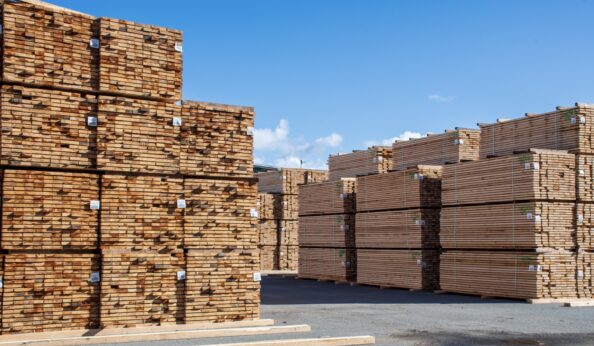 OTTAWA — Wholesale trade, excluding petroleum, petroleum products, and other hydrocarbons and excluding oilseed and grain, rose 0.3 per cent to $85.7 billion in February, Statistics Canada said Monday. The overall increase in sales came as just two of the seven subsectors posted gains. Statistics Canada said sales in the machinery, equipment and supplies subsector gained 7.1 per cent for the month to $19 billion. All four of the subsector’s industry groups climbed, with the computer and communications equipment and supplies industry group up 11.2 per cent, while the construction, forestry, mining, and industrial machinery, equipment and supplies industry group added 6.8 per cent.
OTTAWA — Wholesale trade, excluding petroleum, petroleum products, and other hydrocarbons and excluding oilseed and grain, rose 0.3 per cent to $85.7 billion in February, Statistics Canada said Monday. The overall increase in sales came as just two of the seven subsectors posted gains. Statistics Canada said sales in the machinery, equipment and supplies subsector gained 7.1 per cent for the month to $19 billion. All four of the subsector’s industry groups climbed, with the computer and communications equipment and supplies industry group up 11.2 per cent, while the construction, forestry, mining, and industrial machinery, equipment and supplies industry group added 6.8 per cent.
 Lumber futures fell toward $580 per thousand board feet, sliding further from a two-and-a-half-year high of $685 on March 24th, reflecting a steep decline in construction demand amid disruptive trade policies. The US decision to raise duties on Canadian softwood lumber to roughly 34% has sparked significant uncertainty and raised homebuilding costs, prompting builders to delay projects. Concurrently, Canadian production has been restricted by widespread sawmill closures, diminished timber stocks due to the mountain pine beetle, and tightening forestry policies in key regions like British Columbia, resulting in a surplus that further drives down prices. While there is a gradual shift toward lower-cost Southern Yellow Pine from the US South, logistical and technical hurdles limit its ability to fully offset the reduced Canadian supply. Market participants are adjusting to lower demand expectations amid ongoing trade tensions and a slowing construction sector.
Lumber futures fell toward $580 per thousand board feet, sliding further from a two-and-a-half-year high of $685 on March 24th, reflecting a steep decline in construction demand amid disruptive trade policies. The US decision to raise duties on Canadian softwood lumber to roughly 34% has sparked significant uncertainty and raised homebuilding costs, prompting builders to delay projects. Concurrently, Canadian production has been restricted by widespread sawmill closures, diminished timber stocks due to the mountain pine beetle, and tightening forestry policies in key regions like British Columbia, resulting in a surplus that further drives down prices. While there is a gradual shift toward lower-cost Southern Yellow Pine from the US South, logistical and technical hurdles limit its ability to fully offset the reduced Canadian supply. Market participants are adjusting to lower demand expectations amid ongoing trade tensions and a slowing construction sector.

 Homebuilder stocks plunged Monday following reports that the US is preparing to sharply increase tariffs on Canadian lumber, independent of President Donald Trump’s new “reciprocal” tariffs. …After reports of the new lumber duties emerged over the weekend, however, shares of homebuilders plunged swiftly Monday. …”Tariffs are the clear culprit for the stock market pullback and fears of recession,” says Realtor.com® Senior Economist Joel Berner. “Recession risk is especially poignant for builders.” …The latest round of tariffs, however, will likely increase materials costs for all homebuilders, to some extent, with a recent survey of builders finding that they expect an average cost increase of $9,200 per home as a result of tariffs. …Over the weekend, Moody’s Analytics Chief Economist Mark Zandi raised his outlook for the odds of a recession this year to 60%, up from just 15% a few months ago.
Homebuilder stocks plunged Monday following reports that the US is preparing to sharply increase tariffs on Canadian lumber, independent of President Donald Trump’s new “reciprocal” tariffs. …After reports of the new lumber duties emerged over the weekend, however, shares of homebuilders plunged swiftly Monday. …”Tariffs are the clear culprit for the stock market pullback and fears of recession,” says Realtor.com® Senior Economist Joel Berner. “Recession risk is especially poignant for builders.” …The latest round of tariffs, however, will likely increase materials costs for all homebuilders, to some extent, with a recent survey of builders finding that they expect an average cost increase of $9,200 per home as a result of tariffs. …Over the weekend, Moody’s Analytics Chief Economist Mark Zandi raised his outlook for the odds of a recession this year to 60%, up from just 15% a few months ago.
 Dear Deputy Assistant Secretary Longnecker: The U.S. Chamber strongly opposes the establishment of tariffs or quantitative restrictions on imports of timber, lumber, and their derivative products such as paper, cardboard, and pulp. Imports of these goods do not represent a national security risk, as addressed below. Imposing tariffs on these goods would raise costs for U.S. businesses and home construction, undermine the export success enjoyed by the U.S. paper industry, and reduce incomes in many U.S. communities… It is unreasonable to suggest that imports of these goods represent a national security risk, in part because the chief source of imports in this sector is Canada, a NATO ally and North American Aerospace Defense Command (NORAD) partner… It is not reasonable to claim that imports of these goods from a close ally somehow pose a threat to U.S. national security.
Dear Deputy Assistant Secretary Longnecker: The U.S. Chamber strongly opposes the establishment of tariffs or quantitative restrictions on imports of timber, lumber, and their derivative products such as paper, cardboard, and pulp. Imports of these goods do not represent a national security risk, as addressed below. Imposing tariffs on these goods would raise costs for U.S. businesses and home construction, undermine the export success enjoyed by the U.S. paper industry, and reduce incomes in many U.S. communities… It is unreasonable to suggest that imports of these goods represent a national security risk, in part because the chief source of imports in this sector is Canada, a NATO ally and North American Aerospace Defense Command (NORAD) partner… It is not reasonable to claim that imports of these goods from a close ally somehow pose a threat to U.S. national security.
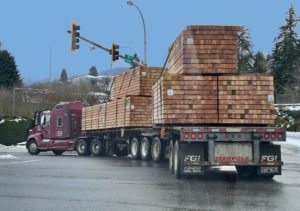 The ongoing trade spat between the U.S. and Canada is impacting BC’s construction sector in ways that could bring short-term gain and long-term pain. At first, there could be an oversupply of lumber if Canadian softwood is taken out of the U.S. equation, resulting in lower costs for B.C. builders and developers, said Padraic Kelly, Vancouver-based director with BTY Group. But costs would later rise significantly, he said. “The medium- and long-term pain would be that if the American market is choked out, mills would close, supply would be constrained and costs would ultimately go up,” Kelly said. The total levy on Canadian softwood lumber going into the U.S. could total between 45% and 55%, taking into account anti-dumping measures introduced by the Biden administration and scheduled to increase this August. Other big-ticket impacts to B.C. construction could be the mechanical and electrical divisions within construction budgets, he said.
The ongoing trade spat between the U.S. and Canada is impacting BC’s construction sector in ways that could bring short-term gain and long-term pain. At first, there could be an oversupply of lumber if Canadian softwood is taken out of the U.S. equation, resulting in lower costs for B.C. builders and developers, said Padraic Kelly, Vancouver-based director with BTY Group. But costs would later rise significantly, he said. “The medium- and long-term pain would be that if the American market is choked out, mills would close, supply would be constrained and costs would ultimately go up,” Kelly said. The total levy on Canadian softwood lumber going into the U.S. could total between 45% and 55%, taking into account anti-dumping measures introduced by the Biden administration and scheduled to increase this August. Other big-ticket impacts to B.C. construction could be the mechanical and electrical divisions within construction budgets, he said. WASHINGTON, DC – Following national home price growth of 5.8% in 2024, a panel of more than 100 housing experts forecasts home price growth to average 3.4% in 2025 and 3.3% in 2026, according to the Q1 2025 Fannie Mae Home Price Expectations Survey (HPES), produced in partnership with Pulsenomics. The panel’s latest estimates of national home price growth represent revisions from last quarter’s expectations of 3.8% for 2025 and 3.6% for 2026, as measured by the Fannie Mae Home Price Index (FNM-HPI).
WASHINGTON, DC – Following national home price growth of 5.8% in 2024, a panel of more than 100 housing experts forecasts home price growth to average 3.4% in 2025 and 3.3% in 2026, according to the Q1 2025 Fannie Mae Home Price Expectations Survey (HPES), produced in partnership with Pulsenomics. The panel’s latest estimates of national home price growth represent revisions from last quarter’s expectations of 3.8% for 2025 and 3.6% for 2026, as measured by the Fannie Mae Home Price Index (FNM-HPI).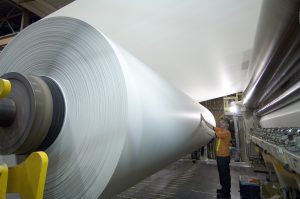 The European pulp and paper industry is struggling to assess the possible impact of tariffs. …Europe has a marginally negative trade balance with the US for pulp and paper. In 2024, it imported 2.6 million tonnes of P&P from the US. In the same year, it exported 2.3 million tonnes of P&P to the country. The largest trade deficits appear to be around pulp (-975,000 tonnes) and containerboard (-310,000 tonnes, mostly kraftliner). On the other hand, Europe has a surplus in graphic paper and cartonboard sales. …“The only certainty we have is that there will be negative consequences for businesses on both sides of the Atlantic. Trade wars are always detrimental for consumers, but we are a ‘made in Europe’ industry, with local capacities to meet the European demand,” he added. …Most market participants believe the stuttering trade war initiated by Trump will further hurt the already stagnating European economy.
The European pulp and paper industry is struggling to assess the possible impact of tariffs. …Europe has a marginally negative trade balance with the US for pulp and paper. In 2024, it imported 2.6 million tonnes of P&P from the US. In the same year, it exported 2.3 million tonnes of P&P to the country. The largest trade deficits appear to be around pulp (-975,000 tonnes) and containerboard (-310,000 tonnes, mostly kraftliner). On the other hand, Europe has a surplus in graphic paper and cartonboard sales. …“The only certainty we have is that there will be negative consequences for businesses on both sides of the Atlantic. Trade wars are always detrimental for consumers, but we are a ‘made in Europe’ industry, with local capacities to meet the European demand,” he added. …Most market participants believe the stuttering trade war initiated by Trump will further hurt the already stagnating European economy.



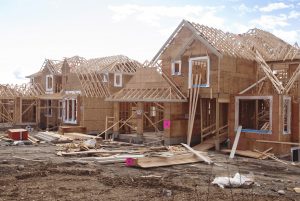 While the current tariff war is justifiably on the minds of many Americans, another type of import tax may be coming later this summer that could have a big impact on new home construction. …The US is preparing to raise duties on Canadian softwood lumber from 14.5% to 34.45%. …A final review of the levies will be published in August or September, with the rate increase taking effect then, according to the National Association of Home Builders. The NAHB has previously estimated that Trump’s tariffs could increase the cost of building a new home by $9,200. ….The proposal to more than double the tax would be a blow to Canadians, but it would also mean “driving up housing costs for Americans,” BC Premier David Eby said. …Some have praised the proposal, suggesting that it will give domestic lumber companies an opportunity to increase production, even if that means higher costs.
While the current tariff war is justifiably on the minds of many Americans, another type of import tax may be coming later this summer that could have a big impact on new home construction. …The US is preparing to raise duties on Canadian softwood lumber from 14.5% to 34.45%. …A final review of the levies will be published in August or September, with the rate increase taking effect then, according to the National Association of Home Builders. The NAHB has previously estimated that Trump’s tariffs could increase the cost of building a new home by $9,200. ….The proposal to more than double the tax would be a blow to Canadians, but it would also mean “driving up housing costs for Americans,” BC Premier David Eby said. …Some have praised the proposal, suggesting that it will give domestic lumber companies an opportunity to increase production, even if that means higher costs.
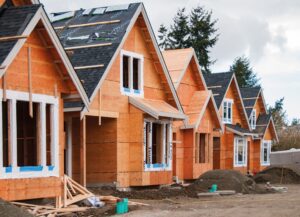 US trade wars could have major implications for an already tenuous housing market….A price hike on building materials will likely make building affordable housing feasible, an approach that many real estate experts believe is crucial to resolving the housing market gridlock. The housing sector comprises over 15% of the US GDP and will be heavily impacted by tariffs on building materials such as lumber and steel. And 70% of imported lumber comes from Canada. The NAHB noted that the tariffs are “not only expected to raise the cost of building materials, which are up 34% since December 2020, far higher than the rate of inflation, but also wreak havoc on the building material supply chain. In turn, this will put even more upward price pressure on building materials.” …Uncertainty stemming from the newly unveiled tariffs has eroded consumer and investor confidence, which has, in turn, diminished homebuyer optimism.
US trade wars could have major implications for an already tenuous housing market….A price hike on building materials will likely make building affordable housing feasible, an approach that many real estate experts believe is crucial to resolving the housing market gridlock. The housing sector comprises over 15% of the US GDP and will be heavily impacted by tariffs on building materials such as lumber and steel. And 70% of imported lumber comes from Canada. The NAHB noted that the tariffs are “not only expected to raise the cost of building materials, which are up 34% since December 2020, far higher than the rate of inflation, but also wreak havoc on the building material supply chain. In turn, this will put even more upward price pressure on building materials.” …Uncertainty stemming from the newly unveiled tariffs has eroded consumer and investor confidence, which has, in turn, diminished homebuyer optimism. US stocks opened lower Monday as markets around the world tumbled over concerns about how President Trump’s sweeping tariffs might upend the global economy and stymie US economic growth. Markets opened in bear market territory – a decline of 20% from a recent peak – after a historic rout in Asia and massive losses in Europe. The Dow fell 1,200 points, or 3.2%. The broader S&P 500 was 3.4% lower and opened in bear territory. The Nasdaq Composite slid 3.96%. The S&P 500 hit a record high less than seven weeks ago, on February 19. If the index closes in bear market territory, that would be the second-fastest peak-to-bear market shift in history. Wall Street’s fear gauge has surged to levels not seen since the Covid-19 pandemic as investors fret over the market’s next move. CNN’s Fear and Greed Index has slumped to its lowest levels this year.
US stocks opened lower Monday as markets around the world tumbled over concerns about how President Trump’s sweeping tariffs might upend the global economy and stymie US economic growth. Markets opened in bear market territory – a decline of 20% from a recent peak – after a historic rout in Asia and massive losses in Europe. The Dow fell 1,200 points, or 3.2%. The broader S&P 500 was 3.4% lower and opened in bear territory. The Nasdaq Composite slid 3.96%. The S&P 500 hit a record high less than seven weeks ago, on February 19. If the index closes in bear market territory, that would be the second-fastest peak-to-bear market shift in history. Wall Street’s fear gauge has surged to levels not seen since the Covid-19 pandemic as investors fret over the market’s next move. CNN’s Fear and Greed Index has slumped to its lowest levels this year. Wall Street’s main indexes reversed course and moved sharply higher after White House economic adviser Kevin Hassett said in an interview that President Donald Trump was considering a 90-day tariff pause on all countries expect China. At 10:20 a.m. the Dow Jones Industrial Average rose 333.50 points, or 0.87%, to 38,614.49, the S&P 500 gained 79.99 points, or 1.69%, to 5,154.07 and the Nasdaq Composite gained 362.69 points, or 2.33%, to 15,950.47.
Wall Street’s main indexes reversed course and moved sharply higher after White House economic adviser Kevin Hassett said in an interview that President Donald Trump was considering a 90-day tariff pause on all countries expect China. At 10:20 a.m. the Dow Jones Industrial Average rose 333.50 points, or 0.87%, to 38,614.49, the S&P 500 gained 79.99 points, or 1.69%, to 5,154.07 and the Nasdaq Composite gained 362.69 points, or 2.33%, to 15,950.47. The stock market took another pounding Friday after China retaliated with new tariffs on U.S. goods, raising fears a trade war will tip the globe into a recession. The Dow Jones Industrial Average traded 1,130 points, or 2.8%. This follows a 1,679.39 point decline on Thursday. The S&P 500 slid 3.2% after the benchmark shed 4.84% on Thursday. The Nasdaq Composite shed 3.5% as many tech companies have exposure to China. …“The Trump administration may be playing a game of chicken with trading partners, but market participants aren’t willing to wait around for the results,” said Michael Arone, at State Street Global Advisors. “Investors are selling first and asking questions later.” Bank stocks tumbled in the premarket as worries of a U.S. economic slowdown grew. …The 10-year Treasury yield fell back below 4% Friday as investors flooded into bonds for safety. JPMorgan late Thursday raised the odds of a recession this year to 60% from 40%.
The stock market took another pounding Friday after China retaliated with new tariffs on U.S. goods, raising fears a trade war will tip the globe into a recession. The Dow Jones Industrial Average traded 1,130 points, or 2.8%. This follows a 1,679.39 point decline on Thursday. The S&P 500 slid 3.2% after the benchmark shed 4.84% on Thursday. The Nasdaq Composite shed 3.5% as many tech companies have exposure to China. …“The Trump administration may be playing a game of chicken with trading partners, but market participants aren’t willing to wait around for the results,” said Michael Arone, at State Street Global Advisors. “Investors are selling first and asking questions later.” Bank stocks tumbled in the premarket as worries of a U.S. economic slowdown grew. …The 10-year Treasury yield fell back below 4% Friday as investors flooded into bonds for safety. JPMorgan late Thursday raised the odds of a recession this year to 60% from 40%. Manufactured homes play a measurable role in the U.S. housing market by providing an affordable supply option for millions of households. According to the American Housing Survey, there are 7.2 million occupied manufactured homes in the U.S., representing 5.4% of total occupied housing and a source of affordable housing, in particular, for rural and lower income households. Often thought of as synonymous to “mobile homes” or “trailers”, manufactured homes are a specific type of factory-built housing that adheres to the U.S. Department of Housing and Urban Development’s Manufactured Home Construction and Safety Standards code. …The East South Central division (Alabama, Kentucky, Mississippi and Tennessee) have the highest concentration of manufactured homes, representing 9.3% of total occupied housing. The Mountain region follows with 8.5%, while the South Atlantic region holds 7.7%.
Manufactured homes play a measurable role in the U.S. housing market by providing an affordable supply option for millions of households. According to the American Housing Survey, there are 7.2 million occupied manufactured homes in the U.S., representing 5.4% of total occupied housing and a source of affordable housing, in particular, for rural and lower income households. Often thought of as synonymous to “mobile homes” or “trailers”, manufactured homes are a specific type of factory-built housing that adheres to the U.S. Department of Housing and Urban Development’s Manufactured Home Construction and Safety Standards code. …The East South Central division (Alabama, Kentucky, Mississippi and Tennessee) have the highest concentration of manufactured homes, representing 9.3% of total occupied housing. The Mountain region follows with 8.5%, while the South Atlantic region holds 7.7%.

 Marie Fallon, the general manager of AR Chambers Supply in Lawrenceville, is nervous about the future of her business. The threat of tariffs has prices fluctuating and she’s worried her supply sources are at risk. …As President Donald Trump’s international trade war rages on, Pennsylvania homebuilding and construction businesses are weathering the dizzying pace of cost increases and then abrupt pauses in tariffs as they try to ensure that long-term projects are completed. Pennsylvania is highly dependent on foreign countries for construction materials, with 63% of the state’s wood imports, 66% of its iron and steel, and 68% of its aluminum coming from Canada and Brazil. …Despite the whiplash changes, some in the industry see the new tariffs as good for the long-term outlook. Hodgkiss Lumber owner Jon Hodgkiss sees Trump’s tariffs as simply a temporary negotiating tactic that will give the US better trade deals.
Marie Fallon, the general manager of AR Chambers Supply in Lawrenceville, is nervous about the future of her business. The threat of tariffs has prices fluctuating and she’s worried her supply sources are at risk. …As President Donald Trump’s international trade war rages on, Pennsylvania homebuilding and construction businesses are weathering the dizzying pace of cost increases and then abrupt pauses in tariffs as they try to ensure that long-term projects are completed. Pennsylvania is highly dependent on foreign countries for construction materials, with 63% of the state’s wood imports, 66% of its iron and steel, and 68% of its aluminum coming from Canada and Brazil. …Despite the whiplash changes, some in the industry see the new tariffs as good for the long-term outlook. Hodgkiss Lumber owner Jon Hodgkiss sees Trump’s tariffs as simply a temporary negotiating tactic that will give the US better trade deals.
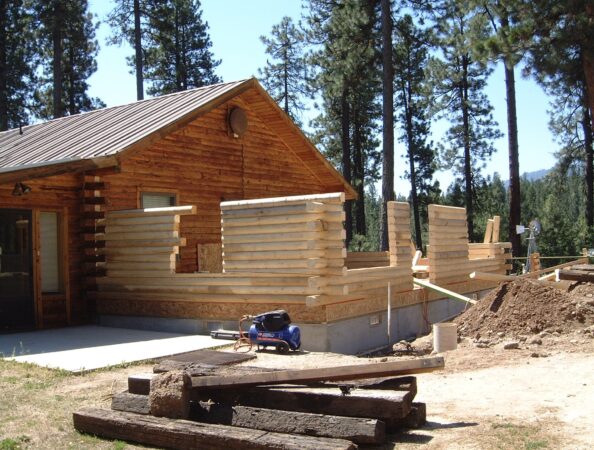 The Arizona House of Representatives recently passed out of the House, a wildfire insurance risk modeling bill, designed to reduce homeowner insurance cancellations, and help residents in wildfire prone regions to obtain homeowners’ insurance. Sponsored by District 7 Representative Dave Marshal, the bill would reduce the insurance companies practice of “blanket” cancellations of homeowner insurance. The key element of the legislation would cause the insurance companies to apply a wildfire risk modeling assessment on “individual” properties rather than the “blanket” assessments practice of entire neighborhoods… Property owners who want a cozy home in a small canyon surrounded by dense brush and low-level trees are at great risk of losing insurance coverage and losing their home to fire.
The Arizona House of Representatives recently passed out of the House, a wildfire insurance risk modeling bill, designed to reduce homeowner insurance cancellations, and help residents in wildfire prone regions to obtain homeowners’ insurance. Sponsored by District 7 Representative Dave Marshal, the bill would reduce the insurance companies practice of “blanket” cancellations of homeowner insurance. The key element of the legislation would cause the insurance companies to apply a wildfire risk modeling assessment on “individual” properties rather than the “blanket” assessments practice of entire neighborhoods… Property owners who want a cozy home in a small canyon surrounded by dense brush and low-level trees are at great risk of losing insurance coverage and losing their home to fire.